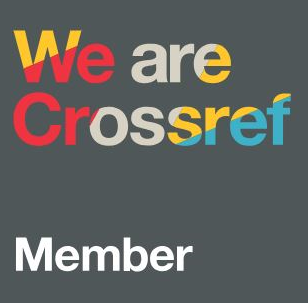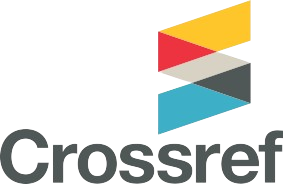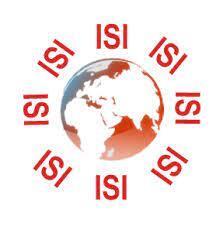Impact Factor Information
East African Journal of Science and Technology is indexed in International Scientific Indexing (ISI). The Journal has Impact Factor Value of 2.671 based on International Citation Report (ICR) for the year 2023-2024.
For more information, visit ISI Journal Details.
Information For Authors
International Conference on Business Management and Innovation (ICBMI2024)
Manuscript TemplateManuscript organization
Organize your article into distinct sections that are clearly delineated and assigned numbers. Subsections should be sequentially numbered as 1.1 (followed by 1.1.1, 1.1.2, ...), 1.2, and so forth. Please note that the abstract is not included in this section numbering. You are encouraged to provide brief headings for each subsection, and each heading should be presented on its own separate line.
Introduction
Clearly outline the goals of your study and offer sufficient context without delving into an extensive literature review or summarizing the findings.
Material and methods
Furnish ample information to enable an independent researcher to replicate your work. If you are utilizing methods that have already been documented, provide a concise summary and cite the source. When directly quoting from a previously published method, use quotation marks and acknowledge the source. Additionally, elucidate any alterations made to existing methods.
Results
Results should be clear and concise.
Discussion
This section should explore the significance of the work's findings rather than reiterating them. In many cases, combining the Results and Discussion is suitable. Please refrain from excessive citations and prolonged discussions of previously published literature.
Conclusions
The primary findings of the study can be summarized in a brief Conclusions
Essential title page information
- Title: Be concise and informative. Titles are frequently employed in information-retrieval systems. Avoid using abbreviations and formulas whenever possible.
- Author Names and Affiliations: In cases where the family name might be unclear (e.g., double names), please provide clarification. Below the authors' names, include their affiliation addresses (where the actual work was conducted). Assign a number immediately before each author's name to indicate their respective affiliations. Ensure that each affiliation includes the complete postal address, including the country name, and the email address of the first author.
- Corresponding Author: Clearly identify the individual responsible for handling all correspondence throughout the peer-review and publication processes, including post-publication. Include telephone and fax numbers (along with the country and area code) in addition to the email address and a comprehensive postal address. The corresponding author must keep their contact details up-to-date.
- Present/Permanent Address: If an author has relocated since the research described in the article was conducted or was visiting at the time, you may indicate a "Present address" (or "Permanent address") as a footnote next to that author's name. The address where the author performed the actual work should remain the primary affiliation address. Use superscript Arabic numerals for such footnotes.
Abstract
A brief and informative abstract is mandatory. It should succinctly outline the research's objectives, key findings, and significant conclusions. The abstract is frequently presented independently of the article, so it must be self-sufficient. Consequently, it's advisable to refrain from including references. It is advisable to steer clear of non-standard or unusual abbreviations. If they are indispensable, they must be explained when first used within the abstract.
Keywords
Authors are invited to submit keywords, no more than six, associated with their paper.
Abbreviations
For abbreviations that are not commonly used in this field, provide definitions in a footnote on the initial page of the article. If these abbreviations are necessary within the abstract, make sure to define them when they are first mentioned in the abstract itself, as well as in the accompanying footnote. It is crucial to maintain uniformity in the use of abbreviations throughout the entire article.
Acknowledgements
Compile acknowledgments in a distinct section positioned at the conclusion of the article, preceding the references. Consequently, avoid including acknowledgments on the title page, as a title-related footnote, or through other means. In this section, enumerate individuals who contributed assistance during the research, such as providing language support, aiding in writing, or proofreading the article, among other contributions.
Nomenclature and units
Adhere to globally recognized standards and conventions by utilizing the International System of Units (SI).
Math formulae
Whenever feasible, express basic formulas within the regular text flow and employ a solidus (/) instead of a horizontal line for small fractional values, like X/Y. Typically, variables should be rendered in italics. For ease of representation, consider using "exp" to indicate powers of 'e'. Number any equations that need to be displayed independently from the main text in consecutive order, particularly if they are explicitly referred to within the text.
Footnotes
Use footnotes in moderation, numbering them sequentially with superscript Arabic numerals throughout the article. Some word processors integrate footnotes within the text, which can be utilized. If this is not the case, show the footnote placements within the text and provide the footnotes separately at the article's conclusion. Ensure that footnotes are not included in the Reference list.
For table footnotes,
Denote each footnote in a table with a superscript lowercase letter.
Figure captions
Make sure every illustration has a caption. Provide the captions independently, without attaching them to the figure. A caption should consist of a concise title (not placed on the figure itself) and an explanatory description of the illustration. Keep textual content within the illustrations as minimal as possible, but ensure thorough explanations of all symbols and abbreviations employed.
Tables
Sequentially number tables based on their order of appearance in the text. Position footnotes pertaining to tables beneath the table content and mark them using lowercase superscript letters. Refrain from using vertical lines. Exercise caution when incorporating tables, ensuring that the information presented in them does not replicate results already described elsewhere in the article.
References
Citation in text
Kindly verify that all references cited in the text are likewise included in the reference list, and vice versa. It is advisable not to include unpublished results and personal communications in the reference list; however, they may be referenced within the text. If these references are included in the reference list, they should adhere to the journal's standard reference style and replace the publication date with either “Unpublished results” or “Personal communication”.








